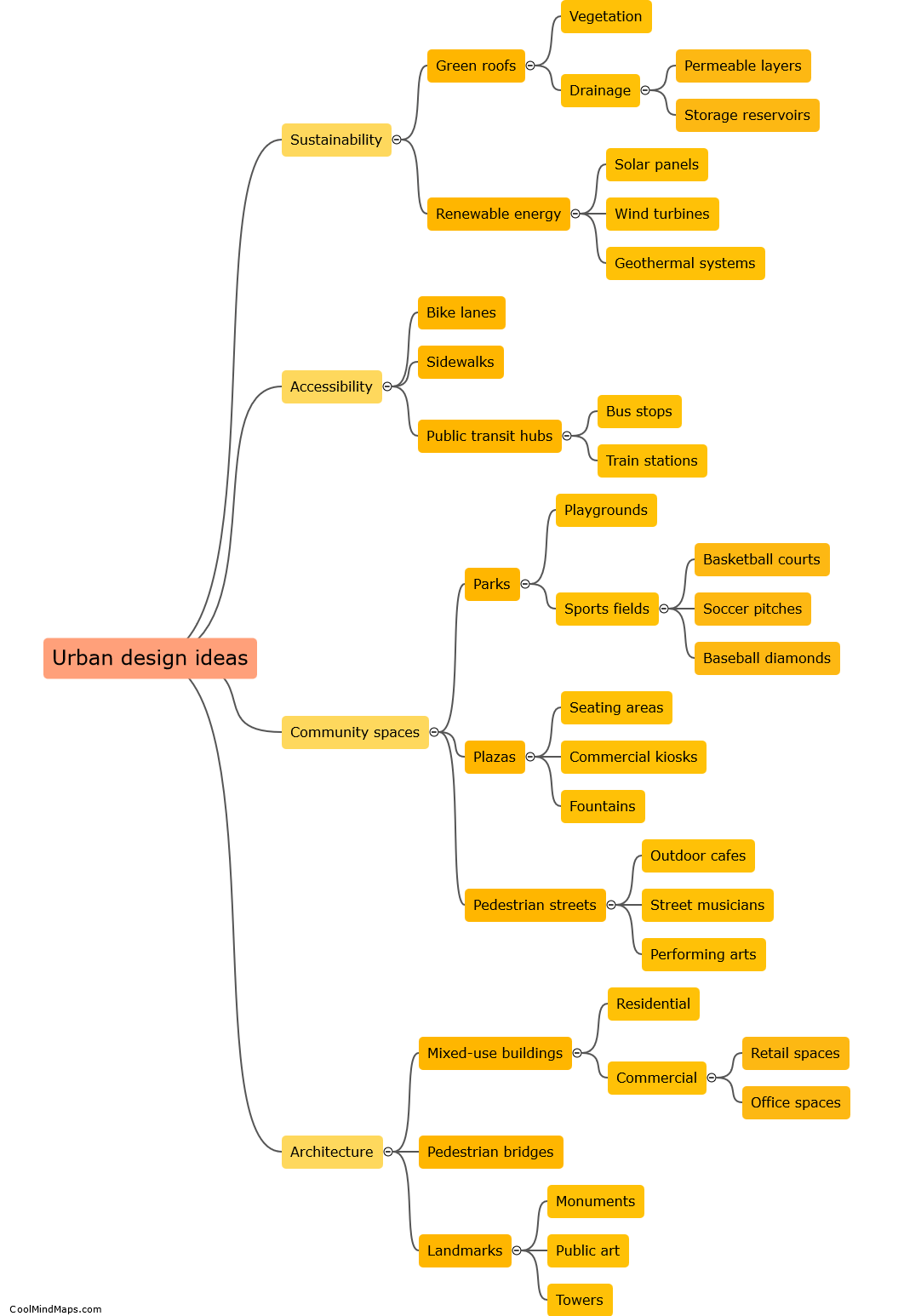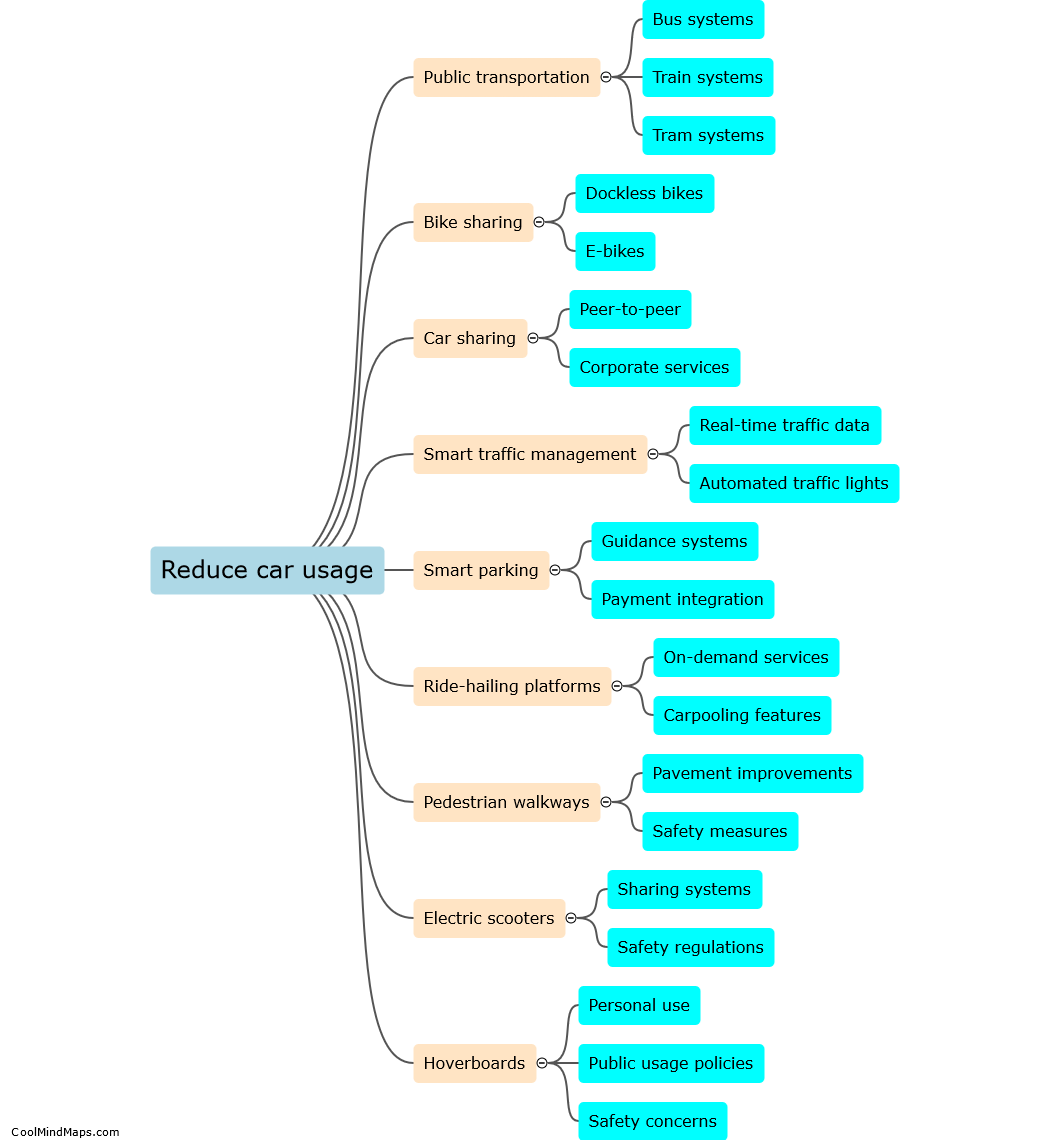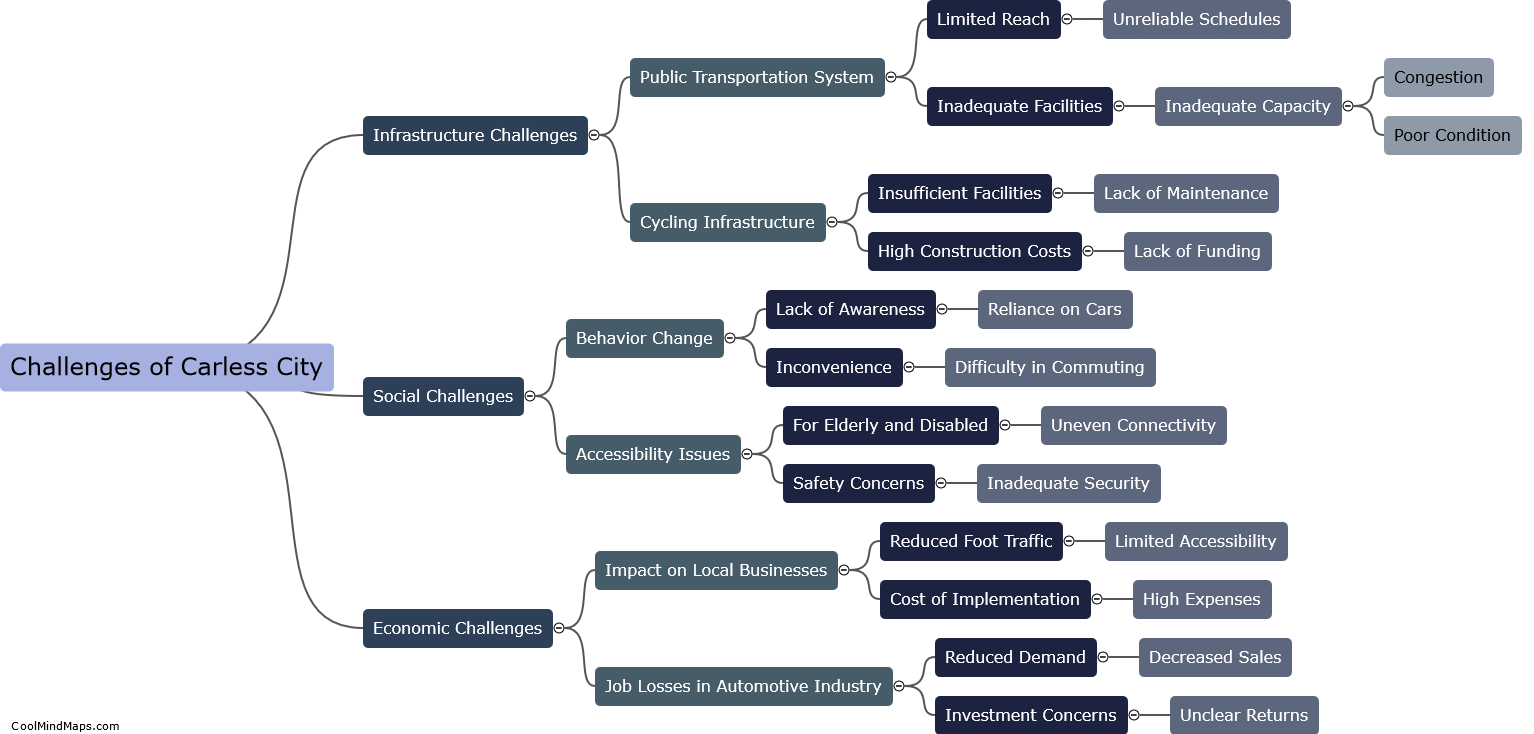How can generative design be applied in cities?
Generative design can be applied in cities to optimize the use of space, minimize environmental impact, and create more efficient and effective urban planning. Using computer algorithms, generative design software can analyze a range of factors such as traffic flow, population density, and building code regulations to generate numerous design options for a specific project. This allows city planners and architects to evaluate different scenarios in real time and make informed decisions about how to build more sustainable and resilient urban environments. Generative design can also help to address issues such as affordable housing and public spaces, resulting in more inclusive and equitable cities.

This mind map was published on 14 June 2023 and has been viewed 110 times.











